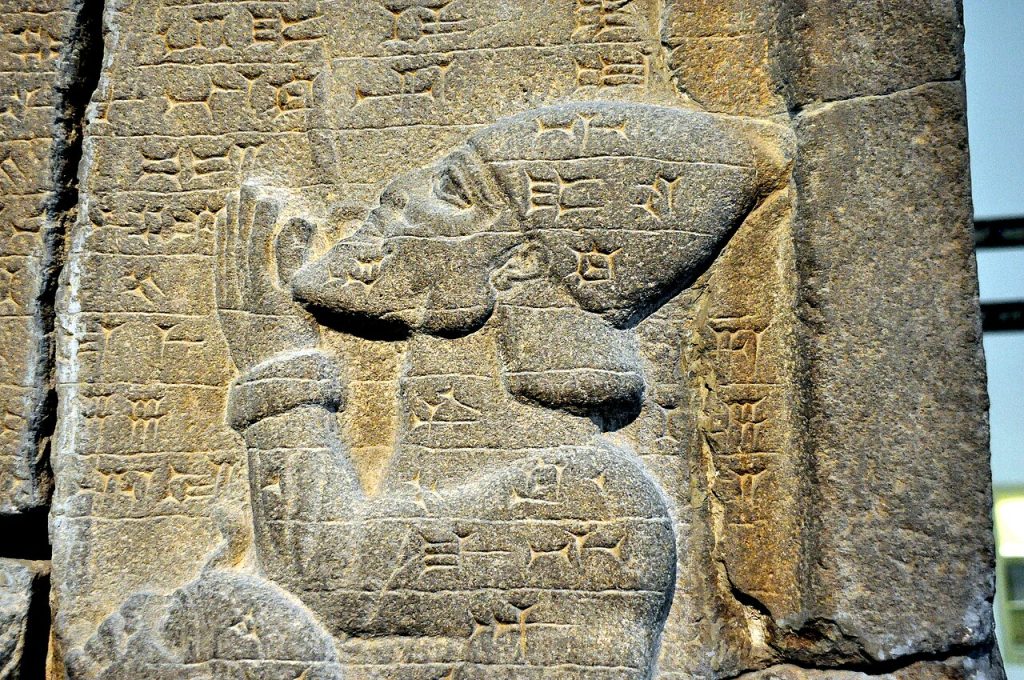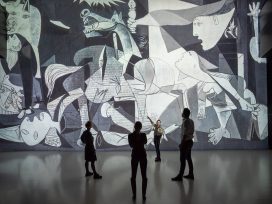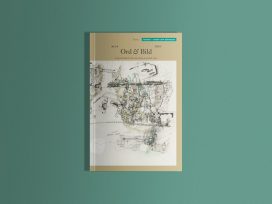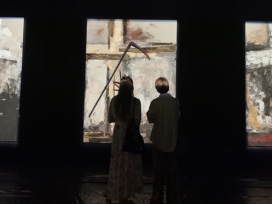Human life and existence are inherently inter and transgenerational, transcending spatial boundaries. They are rooted in relationships of care and dialogues that defy the prevailing racialised and militarised geography and individualistic paradigm of the imperial-neoliberal order. Autobiography, in this context, cannot serve as mere validation of a singular self or life. If we acknowledge that imperial violence has played a significant role in shaping our world, then my memories and, consequently, my life have been etched by a succession of imperialistic violence – as have those of peoples across the globe.
As a social scientist specialising in the violence and memories of political modernity, I have embarked on a scholarly commitment of connecting and working with others and transcending the confines of ‘self’. As a pursuit of human learning and knowledge, my life or research is entangled with anthropological hospitality, making me both an ongoing ‘host’ and an unequivocal ‘captive’ of the recollections of political violence, spanning Western Europe, Rwanda, South Africa, Iraq and Iran. As an anthropologist of modernity, I have experienced the freedom to live and move in all these countries, except Iran; I have inherited and ‘host’ Iran through my mother’s biography. In this pursuit of love of learning, I have also become entwined with the legacies of colonial violence in the Kingdom of Benin and the Asante Kingdom, parts of the world now recognized as Nigeria and Ghana.
On the Ghanaian coastline, one can observe the remnants of imperial forts or the ruins of the trans-Atlantic trade in humans, which formed the foundation for what we now remember as Western Europe: the Portuguese Empire built Elmina Castle, Fort St. Sebastian, Cape Coast Castle and Fort Saint Anthony between 1482 and 1555; the Dutch erected Fort Nassau, Ussher Fort, Fort of Good Hope, Fort Orange, Fort Batenstein, Fort Vredenburgh and Fort Patience from 1612 to 1697; the British owned Fort Amsterdam, James Fort, Fort Metal Cross, Fort Apollonia, Fort Vernon and Fort William between 1638 and 1753; Danish-Norwegian collaboration resulted in Osu or Christiansborg Castle and Fort Fredensborg from 1660 to 1734; the Danish oversaw Fort Kongenstein, Fort Prinzenstein and the Frederiksgave plantation from 1683 into the 1830s; and the Brandenburg-Prussian Empire established Fort Gross Friedrichsburg from 1681 to 1683. Many of these imperial buildings were constructed on the sites of ruins, and conflicts among the empires led to changing ownership and names over time. Some are in good condition and have been designated as UNESCO World Heritage Sites, attracting tourists from around the world.

Detail of Sam’al stele from the Citadel of Sam’al/Zincirli, modern Turkey, 671 BCE. Pergamon Museum, Berlin, Germany. Image by Osama Shukir Muhammed Amin FRCP(Glasgow) via Wikimedia Commons
These ‘ruins’, architecture or memorials remain as hosts to memories of imperial colonialism and will continue to haunt unknown futures. This is also where our autobiographies not only entangle with those of others, both familiar and foreign, including those not yet born, but also point to the infinite responsibilities toward each other and the world at large.
Age-old imperialism
From age-old Mesopotamian empires to those of the twentieth century, political programmes have consistently destroyed life forms or ways of learning, living and being – the plunder of the incalculable tapestry of heterogenous cultures within their crosshairs. Long before the emergence of the Arab-Islamic, Portuguese, Spanish, Ottoman, French, British, Prussian, Dutch, Belgian and American empires, imperial powers had already conquered land and destroyed settlements. The Assyrian Empire’s seventh-century destruction of Elamite Susa, or Shush, a city situated in what is now the central-west region of Iran, is a prime example. As is the Roman Empire’s 149 BCE Delenda est Carthago, the destruction of Carthage situated in contemporary Tunisia.
On the destruction of Elamite Susa, Assyrian Emperor Ashurbanipal said:
Susa, the great holy city, abode of their Gods, seat of their mysteries, I conquered. I entered its palaces, I opened their treasuries where silver and gold, good and wealth were amassed … I destroyed the ziggurat of Susa. I smashed its shining copper horns. I reduced the temples of Elam to naught; their gods and goddesses I scattered to the winds. The tombs of their ancient and recent kings I devasted, I exposed to the sun, and I carried away their bones toward the land of Ashur. I devastated the provinces of Elam and on their lands I sowed salt.
The spectre of imperial violence in the region predated Ashurbanipal’s ascension to power and did not recede during or after his rule. The pivotal Assyrian subjugation of Egypt in 671 BCE, marked by the pillage of Memphis under the dominion of King Esarhaddon, heralded the expansion of an empire that asserted its dominion from the southern territories of Babylonia to the western realms of Phoenicia and Egypt. Age-old imperial powers systematically destroyed civilizations only to solidify their dominion.

Cultural plunder
During the early nineteenth century, imperial powers aggressively seized the heritage and ruins of Mesopotamian empires such as Assyria, Babylon and Akkadia, as well as those of African and Mesoamerican civilizations. These acts of plunder involved clinically digging up, categorizing and then transporting ‘antiquated’ empires to be reassembled in the heart of burgeoning empires, which we now call Western Europe.
Intricately embossed Nebuchadnezzar tiles, those resplendently adorning the Babylonian Ishtar Gate, others gracing the regal Palace – all amassed, stacked into a multitude of wooden crates destined to undertake an extraordinary transcontinental voyage spanning three continents, traversing the Euphrates from Babylon to Berlin, the metropole of the Prussian Empire during the early twentieth century. The ghostly blue and yellow Ishtar Gate and grand Processional Way were destined to serve as an emblem of triumphant dominion, ushering forth the establishment and persistence of the Prussian Empire.
In the waning years of the nineteenth century, the British, French and German Empires extended their relentless campaign aimed at plundering the world’s cultures to the Kingdom of Benin, the Asante Kingdom, the Kingdom of Dahomey and the Kingdom of Bamoun. These imperial onslaughts targeted the heterogenous cultural lives of African kingdoms and the world at large. Like those of ‘ancient’ empires, these cultural lives were also gathered and shipped to the metropoles of London, Paris and Berlin.
Traces and threats of violence
This trajectory of imperial violence has found continuity from the twentieth century through to the twenty-first century. In addition to heritage sites being turned into neoliberal destinations for profit, endangering the preservation of heterogenous cultures and histories, the threat of nuclear annihilation hangs over our planet. Modern states, especially those with imperial ambitions and nuclear bombs, still hold a monopoly on violence, war and destruction. They have the power to wage war and cause devastation on a global scale. As I write, political violence is ongoing in many parts of the world: in Palestine, Ukraine, Sudan, Burkina Faso, Chad, Mali, Niger, Yemen, Libya, Nagorno-Karabakh, Syria, Iraq and Iran, a country under the rule of a colonial state with nuclear ambition, as well as against Indigenous peoples in the Americas, Scandinavia and Australia. The Rohingya people in Asia, the Kurds in Syria, Iran and Turkey, and countless stateless migrants are caught in the crossfire, desperately seeking ‘hospitality’, refuge.
In her book In the Wake, Christina Sharpe engages in a profound exploration of the haunting memories of peoples from the continent of Africa who were forcibly cast into the unfathomable depths of the Atlantic Ocean during the ‘transatlantic trade in humans’. Sharpe describes life processes in terms of ‘residence time’, the period it takes for a substance to enter and then leave the ocean: ‘Human blood is salty, and sodium … has a residence time of 260 million years.’ In this context, the Atlantic becomes a silent witness to the imperial colonial violence or acts of destruction and annihilation. Recognizing the suffering of those seeking refuge today, who become one with the vast expanse of the Atlantic, highlights the power of imperial colonialism living on.
Colonial violence is inextricably entangled with the erstwhile imperial museums of London, Berlin, Brussels and Paris. These museums, and infinite number of others, house and display colonial violence under the label ‘collections’. ‘Objects’ from the African continent – described as ‘primitive art’ from the nineteenth to late-twentieth centuries – included macabre relics such as human skulls and remains, as well as cultural, political and religious artifacts, or artworks extracted from African kingdoms and regions across the continent.
The bas-relief portraying the Assyrian imperial destruction of Elamite Susa and the Assyrian imperial library are on show at the British Museum in London; King Esarhaddon’s Victory Stele, commemorating his triumphal conquest of Egypt, is prominently situated at the threshold of the Babylonian Processional Way within the confines of the Pergamon Museum in Berlin; the Stele on which Babylonian King Hammurabi’s laws are inscribed is in the Louvre, Paris; and the Nefertiti Bust is on display in the Neues Museum, Berlin. Nineteenth-century imperial plunder continues to cast its spectral shadow over modern or imperial states such as Germany, France, the UK, the US, the Netherlands and Belgium.
In the era of an infinite neoliberal quest for profit and ecological destruction, imperial museums do not exist as islands. They have evolved into ‘small colonies’, heavily protected by state bureaucracy, bureaucrats as Kafkian gatekeepers, unprecedented surveillance technologies, security agencies and radical capitalist calculations. This entanglement does not point us to a historic transformation that would give place to certain justice but rather unbroken colonial thinking, policies, practices and connections to historical imperialistic foundations.
Imperial museums continue to assert historical and legal ownership over the plunder of cultural heritages, artifacts and artworks as system of knowledge. These acts of museographic appropriation displayed as ‘property’ bring us, visitors, face to face with ‘catastrophic art’ that is both vessels of precolonial knowledge systems and survivors of imperial knowledge destruction. These acts of destruction that continue to unfold in contemporary museums as ‘objects’ or artworks on display were forcibly taken to the heart of empire metropoles, sold at auctions, taken to private collections, and categorized, classified and displayed by ethnologists, curators and museums. These collections, which used to be called ‘ethnological’ or ‘ethnographic’, have been rebranded as ‘world’ or ‘universal’ museums. The change of name not only circumnavigates the historical pursuit of restitution but also denies their own imperial colonial histories and the imperial destruction and loss of knowledge, ‘epistemicide’.
Catastrophic art shows that imperial plunder and the politics of restitution cannot be fully understood without closely examining the imperial commitment to the destruction of political and economic order, knowledge systems, peoples and life forms. My analysis of these acts of imperial destruction underscores their historical roots in the fifteenth century. For example, if in the Americas, missionaries and armed colonialists, ‘freely appropriated the knowledge and practices of local people using traditional, plant-based medicines against various illnesses. That knowledge was transported back to the centers of imperialism, where it provided the basis for a nascent pharmaceutical industry’, in ‘both Mexico and Peru, the conquistadors confiscated elaborate artwork and statuary made of gold and silver to be melted down for use as money’. These acts of appropriation and destruction show how the current politics of the restitution of imperial plunder exposes the durability and persistent rhetoric of former imperial states.
The imperial promise
Emmanuel Macron’s speech at the University of Ouagadougou in Burkina Faso on 28 November 2017 has influenced the return of cultural ‘artefacts’ in France and Germany. In his address, the French president declared one of his top priorities in office to be the lives of catastrophic art or plundered heritages from the continent of Africa: artefacts should move between France and Africa, while creating conditions for their temporary or permanent return. A presidential report on restitution was published the following year. Both the speech and the report reflect an imperial dream that aims for ‘future’ cooperation between France and Africa, while making distinctions between ‘sub-Saharan’ and ‘non-sub-Saharan’ Africa. Both also transform French colonial histories into a matter of heritage laws, museums, curatorship and bureaucracy in France.
In December 2022 the German Foreign Minister, Annalena Baerbock, delivered a speech in Abuja, Nigeria, supported by a large delegation, including Claudia Roth, Minister of State for Culture, Katja Keul, Minister of State for Africa, the President of the Prussian Cultural Heritage Foundation and museum directors. Twenty Benin bronzes from various German museums were also in attendance. ‘We are here to right a wrong,’ said Baerbock. Stating how the bronzes would go on display in Nigeria and be available for international loans, including to Germany, the foreign minister asserted: ‘What is crucial is, you’ll know where they are. You know that they belong to Nigeria. And you know that they can come home.’ Among the twenty Benin bronzes was a key: ‘This key is a symbol,’ said Baerbock. ‘This key can help us unlock another chapter in the friendship between our people … to push the door of the future of our friendship wide open.’
These examples highlight how the histories of multiple colonial violence remain with us in current political translations of catastrophic art. The French president and the German foreign minister are interested in separate imperial dreams dressed up in the rhetoric of ‘future’ and ‘friendship’ that destroy all the possibilities of opening up to colonial histories and responsibilities, coupled with ethical responsibility. These imperial dreams rest on what Stuart Hall calls ‘imaginative identification’ founded on ‘difference’, which is then ‘turned into an invitation to power’ – the power to know, to conquer, to annihilate, to dispossess, to own and dominate, and to naturalize nineteenth-century imperialism and ‘white supremacy’ as the order of things. This is where restitution as an invitation to power is an imperial promise. Whenever there is a sign of the haunting of colonialism, this power will assert knowledge and domination. There is no room for historical and ethical responsibilities, or critical imagination, or love, within this promise.
In The Book of Embraces, Eduardo Galeano writes:
There was an old and solitary man who spent most of his time in bed. There were rumours that he had a treasure hidden in his house. One day some thieves broke in, they searched everywhere and found a chest in the cellar. They went off with it and when they opened it they found that it was filled with letters. They were the love letters the old man had received all over the course of his long life. The thieves were going to burn the letters, but they talked it over and finally decided to return them. One by one. One a week. Since then, every Monday at noon, the old man would be waiting for the postman to appear. As soon as he saw him, the old man would start running and the postman, who knew all about it, held the letter in his hand. And even St. Peter could hear the beating of that heart, created with joy at receiving a message from a woman.
Since empires are inherently annihilatory and lack regard for ethics or love, the radical contrast between the thieves in The Book of Embraces and the imperial destruction of knowledge and peoples, plunder and theft, is difficult to deny. The current rhetoric of restitution refuses to mark a profound turning point in the historical, political, museographic and ethical relations to catastrophic art that continues to be treated, labelled and displayed as lifeless ‘objects’ in museums across the world at large, deeply piercing our autobiographies. Restitution not as an invitation to imperial power but as a love letter is yet to come.
This is an edited version of an article published by Springerin 4/2023.








